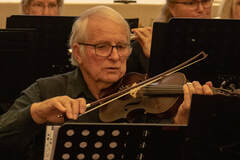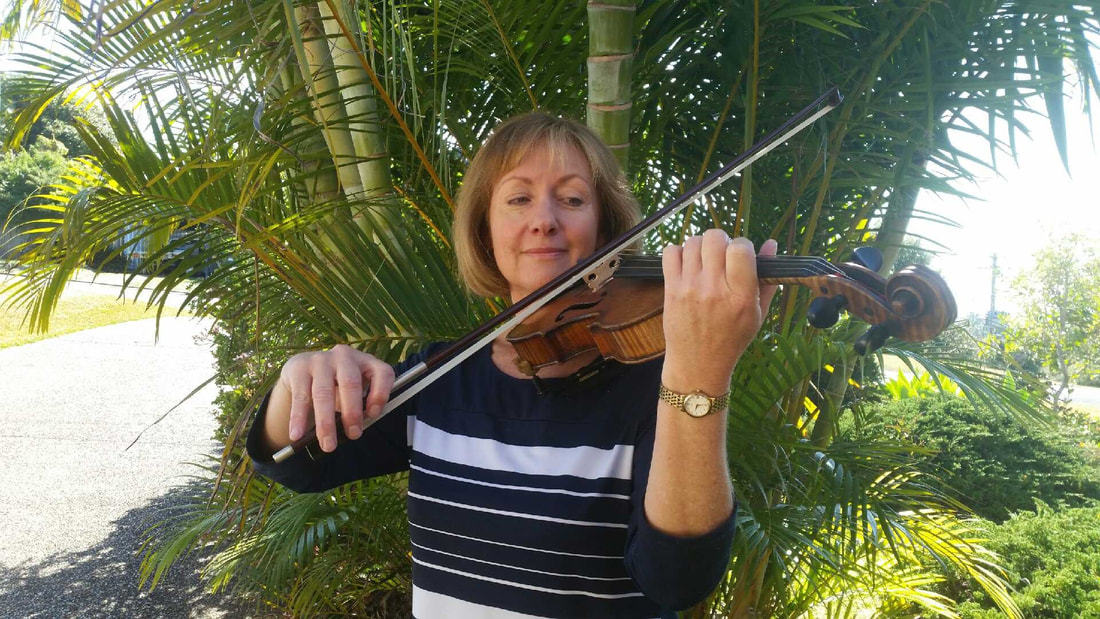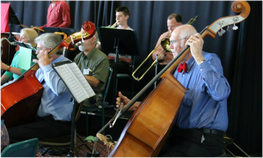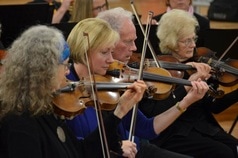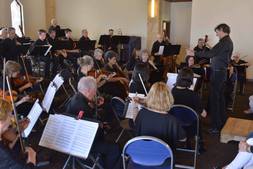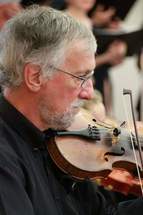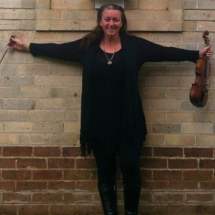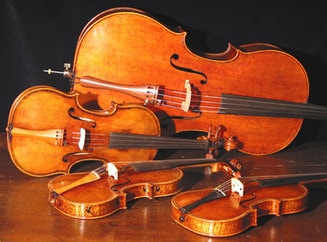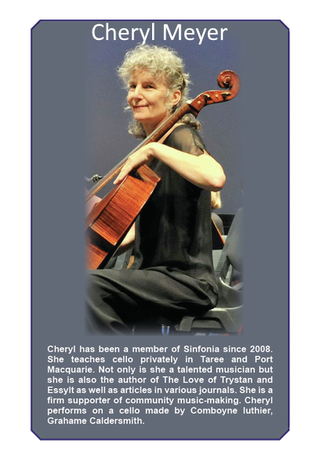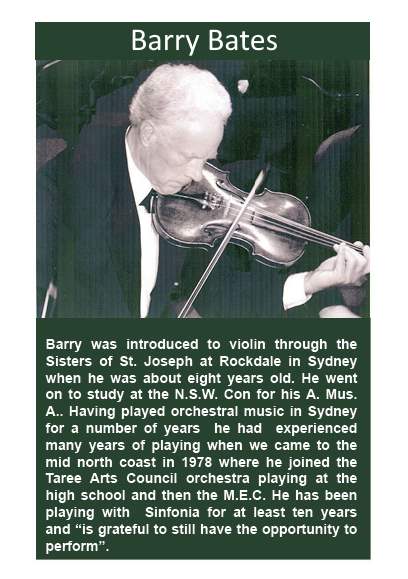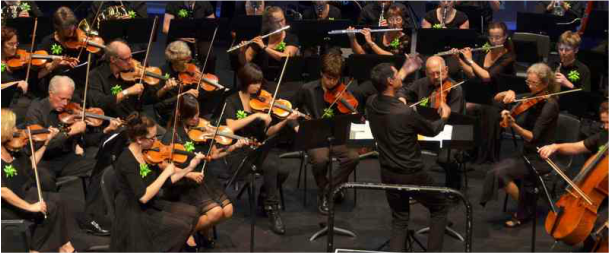
Sinfonia String Section
The strings section is what mainly distinguishes an orchestra from a band, though many bands call themselves orchestras! As a group, divided into violins, violas, cellos and double basses, it forms the core sound of most orchestral works. Sinfonia's strings players are an eclectic group of music lovers. While some are experienced music teachers both privately and within local schools, many have or have had entirely different careers which encompass medicine, dental, carpentry, catering, writing, graphic arts, farming and gardening. Most have been members of the orchestra for many years. The strings section has the greatest difference in ages from high school students to our most senior player – a difference of almost 80 years!
The strings section is what mainly distinguishes an orchestra from a band, though many bands call themselves orchestras! As a group, divided into violins, violas, cellos and double basses, it forms the core sound of most orchestral works. Sinfonia's strings players are an eclectic group of music lovers. While some are experienced music teachers both privately and within local schools, many have or have had entirely different careers which encompass medicine, dental, carpentry, catering, writing, graphic arts, farming and gardening. Most have been members of the orchestra for many years. The strings section has the greatest difference in ages from high school students to our most senior player – a difference of almost 80 years!
|
Violin I
Carmel Brown (Section Leader) Anthony Rutter Kerrie McKenzie Pat Weekes Annette Lee Violin II
James Webb (Section Leader) Ellen Auriac Robert Clunas Jennifer McKendry Rudi Pertot Viola
Fran Bec John Eather Cello
Cheryl Meyer (Section Leader) Derek Bardwell Mandy Bartholomew Penny Orchard Roz Maas Leigh Vaughan Double Bass
Patrick Guest Bob Clunas playing with Sinfonia at St. Johns Taree |
String Section Member Profiles
|
An orchestra consisting solely of a string section is called a string orchestra.
The most common seating arrangement is with first violins, second violins, violas and cellos clockwise around the conductor, with basses behind the cellos on the right.[1] In the 19th century it was standard[2] to have the first and second violins on opposite sides (violin I, cello, viola, violin II), rendering obvious the crossing of their parts in, for example, the opening of the finale to Tchaikovsky's Sixth Symphony.
If space or numbers are limited, cellos and basses can be put in the middle, violins and violas on the left (thus facing the audience) and winds to the right; this is the usual arrangement in orchestra pits.[3] The seating may also be specified by the composer, as in Béla Bartók's Music for Strings, Percussion and Celesta, which uses antiphonal string sections, one on each side of the stage.
SOURCE: WIKIPEDIA
The most common seating arrangement is with first violins, second violins, violas and cellos clockwise around the conductor, with basses behind the cellos on the right.[1] In the 19th century it was standard[2] to have the first and second violins on opposite sides (violin I, cello, viola, violin II), rendering obvious the crossing of their parts in, for example, the opening of the finale to Tchaikovsky's Sixth Symphony.
If space or numbers are limited, cellos and basses can be put in the middle, violins and violas on the left (thus facing the audience) and winds to the right; this is the usual arrangement in orchestra pits.[3] The seating may also be specified by the composer, as in Béla Bartók's Music for Strings, Percussion and Celesta, which uses antiphonal string sections, one on each side of the stage.
SOURCE: WIKIPEDIA
